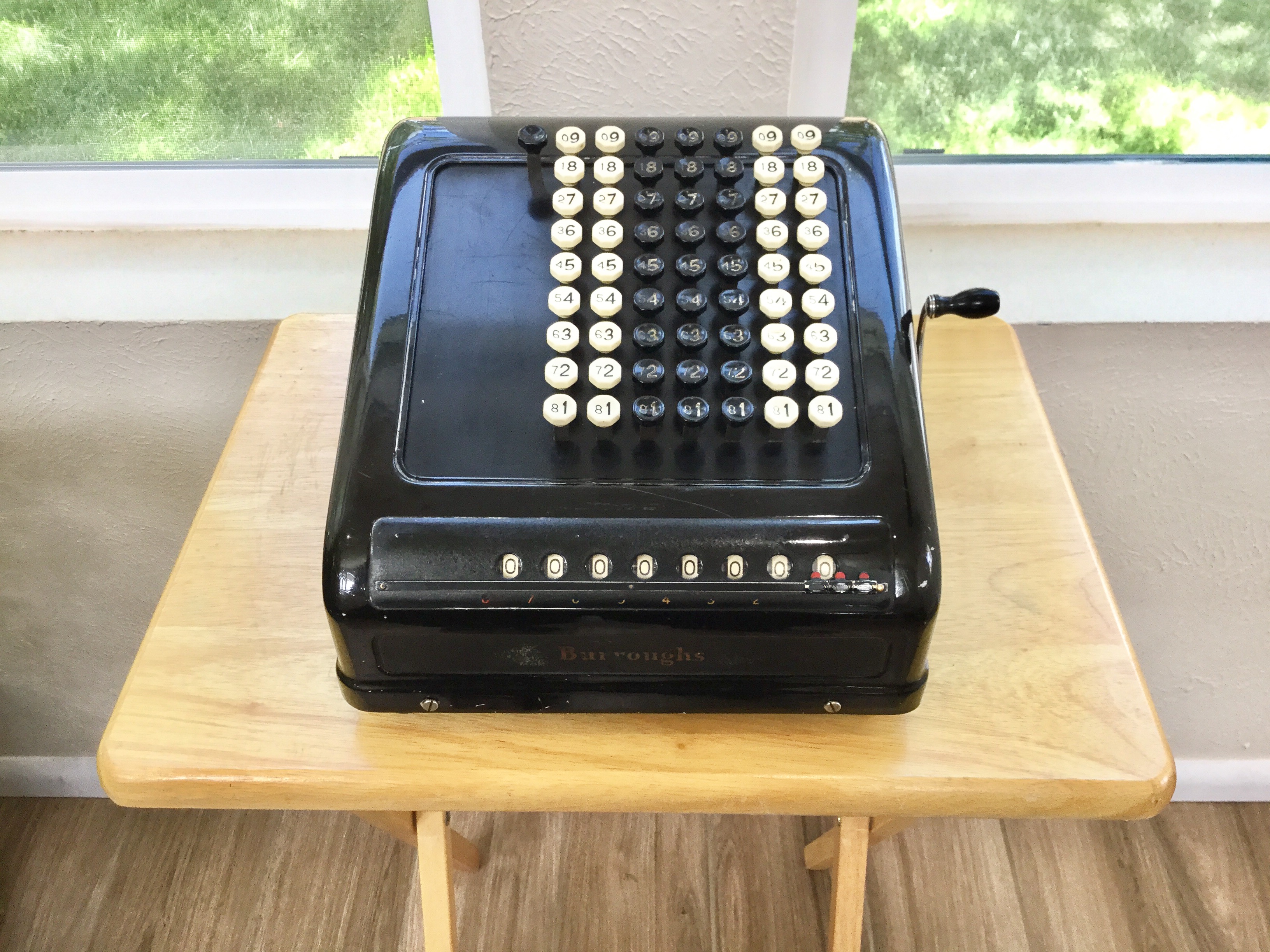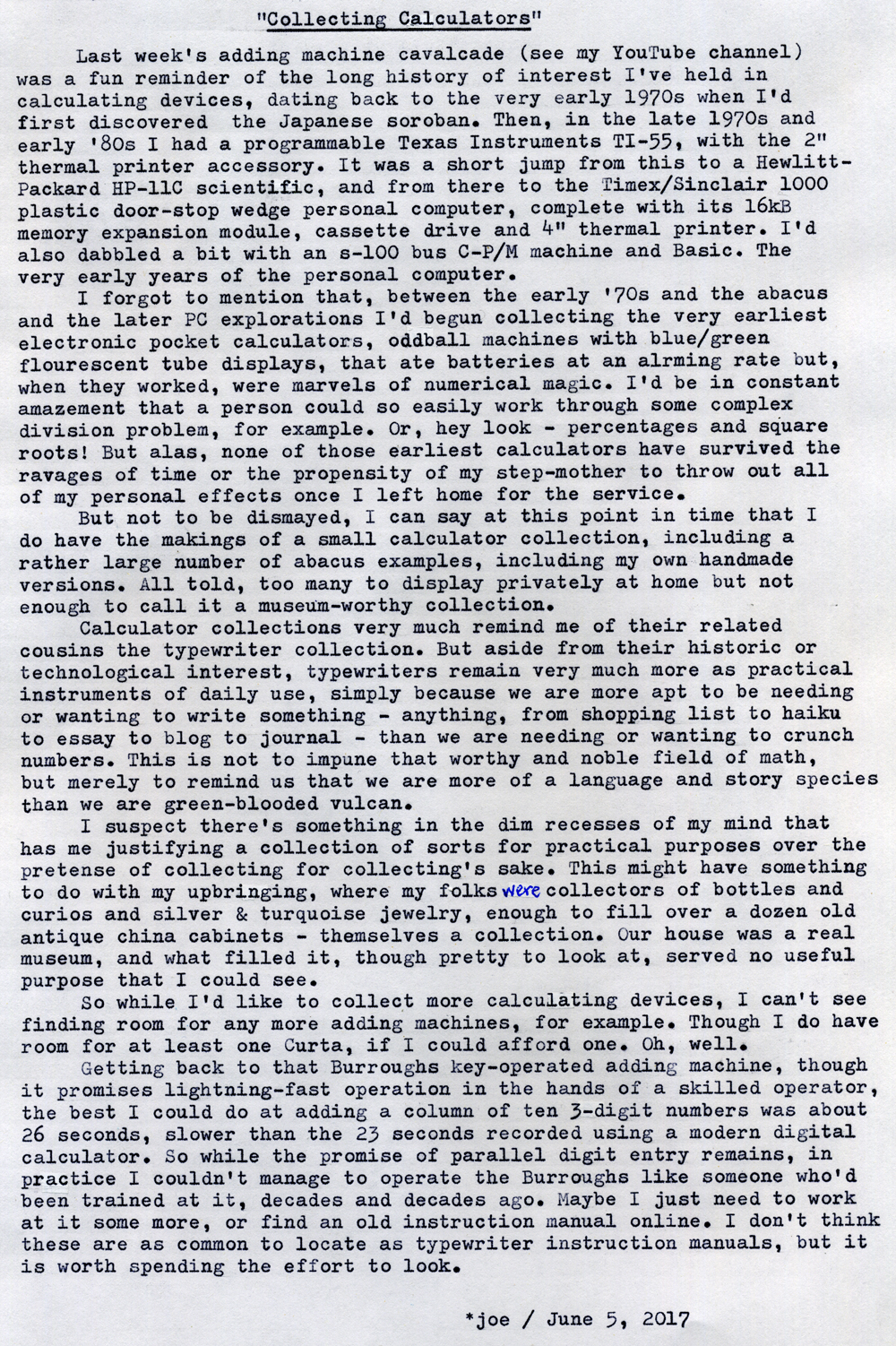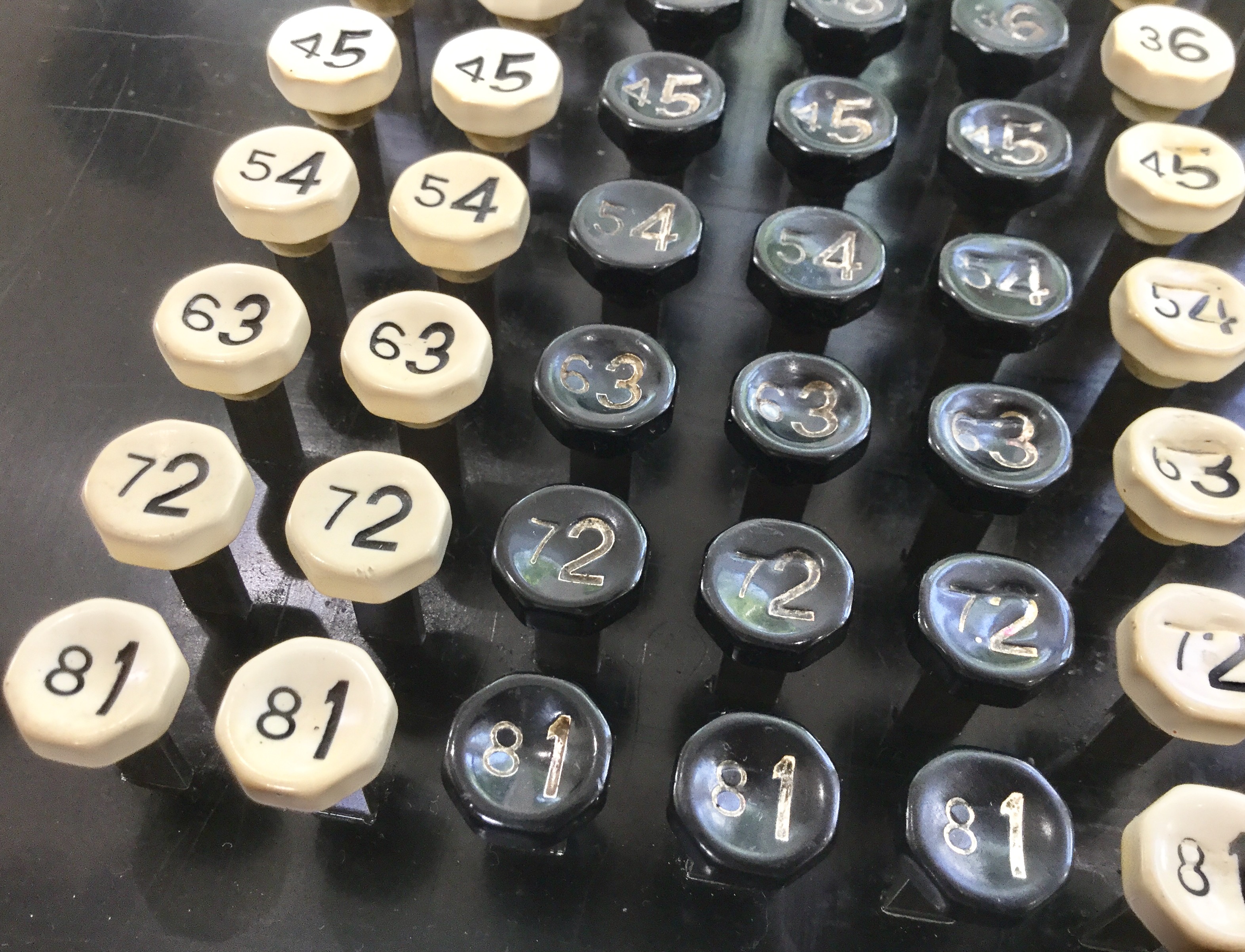Collecting Calculators


Post-Script: I've ordered a copy of a Burroughs key-operated adding machine manual, dated from 1939, so when I receive it and have time to review it, I'll post again on any findings I glean, especially in regard to more efficient methods of operation.
The little ad hoc speed test I conducted between a 10-key electronic calculator and this Burroughs "comptometer" yielded unexpected results. I'd expected to be able to enter the ten 3-digit numbers into the Burroughs in parallel fashion, using three fingers and/or both hands, thus decreasing the time to nearly a third of what one might do on a conventional calculator keyboard, where each individual digit has to be entered one-at-a-time, in serial order. But the efficiency of finger placement on the ten-key pad made up for any advantage gained from parallel digit entry - and, as a matter of fact, I wasn't able to achieve true parallel digit entry on the Burroughs, due to a combination of factors, most notably because of my poor finger placement. The height of each row of nine keys on the Burroughs machine is a wider span than what I can comfortably manage, plus they are arranged in vertical columns, meaning I'd have to use some odd hand placement where my elbows are splayed out sideways and my fingers are parallel to the columns of keys.
I did some Internet research and found an old bulletin board discussion thread from circa 2003 concerning these machines. It seems experienced operators were able to deftly conform the position of their fingers to that required for each number grouping, and then quickly stab their hand down upon the keyboard, thereby simultaneously hitting all the keys of a number at once. Were I able to do that, I'm certain the results of my speed test would have been different.
This does in large measure remind me of the training and practice required to be a proficient abacus operator. And also reminds me that, although I've never been truly proficient at the Japanese soroban, it's one of those skills requiring constant practice, like a musical instrument, as an analogy. And thus there is the expectation that I could, in due time, put in the necessary practice time to actually use the Burroughs machine to its intended purpose. Which, if I do so, will require at least another blog article and accompanying video.
One aspect of the Burroughs machine that I failed to expand upon in last week's video was the fact of it having octagonal keys. These are very elegant in appearance, also reminding me of the old Oliver 5-series typewriters. I'm also reminded, on a personal level, of my maternal grandfather who, back in the 1930s, built an octagonal farm house in Florida, at a time when such configurations were considered especially daring and innovative.

Labels: Burroughs, calculators, Olympia SF, retro tech

6 Comments:
Yeah it seems like most typewriter manufacturers cut their teeth on calculators and adding machines. Canon for instance produced electronic calculators many years before they produced an electronic typewriter. :)
Youtube has several interesting videos under "comptometer." One that the entry columns only goes from one to five. Another, where he presses a key to the left of the keyboard before entering the 9's to the left of the number to be subtracted.
One day I hope to add at least one Burroughs mechanical adding machine to my typewriter collection or would it be to my slide rule or HP calculator collection. I finally have a house with some room to expand my collections and Keep Mrs. happy!
I am glad to see this post. This collecting calculator is rare. It's an informative article. Keep sharing more information with us. Now it's time to avail shutters in birmingham for more information.
I've always been amused by the styling of machines from this era. I like these unique type writers. Your article is really informative about the typewriters. Thanks for sharing this with us. 25th island of Greece
Collecting calculators is such a fascinating hobby. It’s amazing how they combine history and technology. Reading this inspired me to stay focused as I work on Do My OTHM Assignment
Post a Comment
<< Home